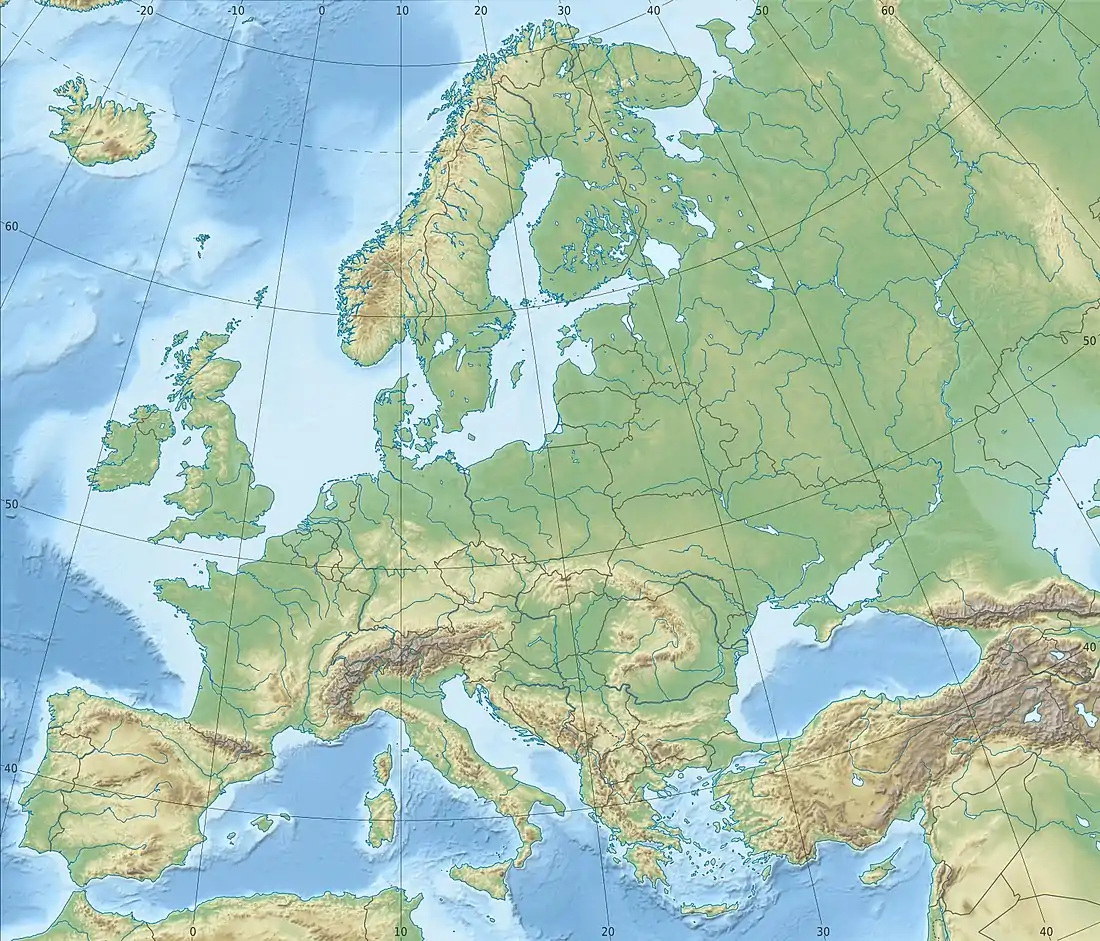| Theth National Park | |
|---|---|
 Theth during autumn. | |
 Location within Albania  Theth National Park (Europe) | |
| Location | Shkodër County |
| Nearest city | Koplik |
| Coordinates | 42°23′45″N 19°46′28″E / 42.39583°N 19.77444°E |
| Area | 2,630 ha (26.3 km2) |
| Established | 21 November 1966[1][2] |
| Governing body | National Agency of Protected Areas |
Theth National Park (Albanian: Parku Kombëtar i Thethit) was a national park in northern Albania. In 2022, the park was amalgamated to form the Alps of Albania National Park. Established in 1966, the park covered 2,630 ha (26.3 km2) and is centred on the Albanian Alps, encompassing the larger portion of Shala Valley.[3][4] The park was established to protect various ecosystems and biodiversity and the cultural and historical heritage of the region. It is dominated by high terrain, with a wide variety of natural features including valleys, rivers, mountains, waterfalls, dense forests and several rock formations. The International Union for Conservation of Nature (IUCN) has listed the park as Category II. Notably, the region has been also identified as an important Bird and Plant Area.[5] In 2017, Theth has been further declared a Protected Historic Center.[6][7]
Theth village sprawls across the upper Shala Valley and is trapped on four sides by numerous two-thousanders such as Radohima in the west, Arapi and Poplluka in the north and Jezerca in the east. Standing at 1,795 m (5,889 ft), the Valbona Pass leads a mountain path in the west, which separates the park from the Valbona Valley National Park. Like most of the Albanian Alps, the park is dominated by limestone and dolomite rocks and shows major karst features such as the Grunas Canyon and the southern wall of Arapi, which is considered the highest rock face in the Balkans.[8]
Flora
Despite its limited area, the park is distinguished by a highly diverse flora with estimates which vary between 1500 and 1650 species of plants among which 70 species are endangered.[9][10] Theth is part of a large preserved ecosystem all of which is primarily untouched with pristine quality. Biogeographically, the Dinaric Mountains mixed forests terrestrial ecoregion of the Palearctic temperate broadleaf and mixed forest biome occur in the park. There are three types of forest found at the park. The oak floor extends from an altitude between 600 metres up to 800 metres and is dominated, among other by austrian oak, oriental hornbeam, hophornbeam, cornel and flowering ash.[9] The beech floor is mainly covered with common beech, silver fir and sycamore, between 900 metres and 1,900 metres.[9] The alpine floor, lying at an altitude which ranges between 1,900 metres to 2,300 metres, is characterized by herbaceous plants and shrubs most notable amongst them is the juniper and willow. Moreover, the most important plants of this floor include the alpine bluegrass, alpine aster, trefoil and common bird's-foot trefoil.[9]
Fauna
Only 20 species of mammals has been recorded within the park's land area.[11] Additionally, large mammals such as brown bear, roe deer, chamois as well as rare or endangered species like the gray wolf, lynx, and wild goat inhabit the park.[11] 50 species of birds have been observed, with raptors such as the golden eagle, lesser kestrel, nuthatch, robin, blackbird, red-backed shrike, western capercaillie and rock partridge.[11] Due to the harsh winters, the park has few reptile and amphibian species. A total of 10 species of reptiles and 8 species of amphibia reside in park including the alpine salamander, common frog, alpine newt and brown trout.[11]
Gallery
.jpg.webp) The Tulipa albanica is an endemic species in the Albanian Alps
The Tulipa albanica is an endemic species in the Albanian Alps
.jpg.webp) Grunas Canyon has vast carbon formations
Grunas Canyon has vast carbon formations
See also
References
- ↑ "RRJETI I ZONAVE TË MBROJTURA NË SHQIPËRI" (PDF). mjedisi.gov.al (in Albanian). p. 1. Archived from the original (PDF) on 2017-09-05.
- ↑ Thethi-Guide. "Historia e Parkut Kombetar Theth" (in Albanian). Retrieved 28 July 2010.
- ↑ "Thethi & Valbona Valley National Parks, and Gashi River Strict Nature Reserve Management Plan" (PDF). researchgate.net. p. 7.
- ↑ "Vlerësimi Strategjik Mjedisor për Planin e Integruar Ndersektorial te Bregdetit" (PDF). planifikimi.gov.al (in Albanian). p. 45. Archived from the original (PDF) on 2017-10-28.
- ↑ BirdLife International. "Thethi". datazone.birdlife.org.
- ↑ Albanian National Agency of Tourism. "Valbona Valley National Park" (in Albanian). Archived from the original on 25 July 2011. Retrieved 28 July 2010.
- ↑ IUCN, World Wide Fund for Nature, Plantlife. "Important Plant Areas of the south and east Mediterranean region" (PDF). portals.iucn.org. p. 75.
{{cite web}}: CS1 maint: multiple names: authors list (link) - ↑ "Maja e Arapit, Geoquest Kletterführer" (PDF). dav-augsburg.de (in German). p. 3.
- 1 2 3 4 "VLERËSIMI STRATEGJIK MJEDISOR P.P.V. BASHKIA SHKODËR" (PDF). bashkiashkoder.gov.al (in Albanian). Shkodër. pp. 118–119.
- ↑ Rudolf Abraham (30 November 2017). The Peaks of the Balkans Trail: Montenegro, Albania and Kosovo. Cicerone Press Limited, 2017. p. 27. ISBN 9781783625550.
- 1 2 3 4 "VLERËSIMI STRATEGJIK MJEDISOR P.P.V. BASHKIA SHKODËR" (PDF). bashkiashkoder.gov.al (in Albanian). Shkodër. pp. 118–120.